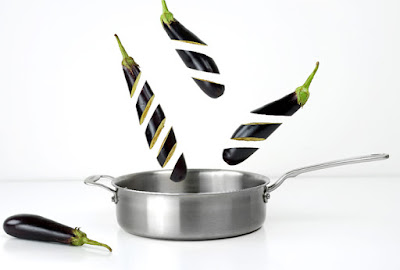If you love to watch cooking competitions such as Hell’s
Kitchen or Master Chef, you probably have a question in your mind of what
cookware do chefs use? There are a couple of pans and pots that they buy for the
kitchen or home use. But there are also many considerations such as personal
preference, the food type that they want to cook and the style of their
cooking. A couple of professional chefs
want to try cookware that is completed with newer technology like carbon steel.
But some chefs are still using their personal tools like cast iron skillets.
So What Cookware Do Chefs Use?
Frying Pans
There are a lot of features that you can find on frying pans
such as a flat bottom and rounded edges. This cookware is made out of aluminum, ceramic, tempered glass, copper, stainless steel, cast iron, carbon steel and many more.
Frying pan comes with newer styles such as titanium, carbon steel, and more.
Sauté Pans
As you can see from its name, this type of pan is used by a pro
chef for sautéing. It means that you can move the food while you fry it. You do
not need to use much oil for this cooking process. This type of pan is
identical with a frying pan; meanwhile, the frying is shallower than sauté pan.
Sauté pan also has deeper edged than its competitor. For those of you who need
to sauté vegetables or fruits, this type of pan is the perfect choice for you.
Sauce Pans
What cookware do chefs use at home as well as a professional
kitchen? Many pro chefs use this saucepan to cook pasta, veggies, boil eggs,
soup, or sauce. This type of cookware is also the perfect choice for reheating food.
This little pan is very versatile as you can use it in a professional kitchen
and home. The design of this pan comes with tall sides and rounded bottom.
There is also a lid in most saucepans which is used to avoid liquid from
evaporating the pan.
Brazier Pans
Another crucial staple in the professional kitchen is the brazier
pan. But you can also use this style of the pan in your home as well. There are
many features that you can find in this pan such as flat-bottomed pan design
and a moisture-locking lid. You can use this pan to cook your food slowly in the
oven or you can brown your food on the stove. This type of pan is made of
stainless steel or aluminum. And you can also choose a couple of sizes.
Griddle Pans
For commercial kitchens, griddle pans are the best choice.
These styles of pans come with a large surface of nonstick cooking. These pans
are completed with handle and there are also many features that you can enjoy
like a large square shape. There are a couple of griddle pans that are designed
for those of you who love to cook at home. These types of pans are made out of
Teflon. But what cookware do chefs use in the commercial kitchens? The griddles
that are used in the kitchen are made out of cast iron.


